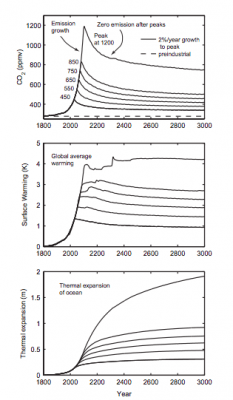Kevin Loria’s article on the rise in Carbon Dioxide levels mentions that, for the first time in more than 800,000 years, the monthly average atmospheric carbon dioxide levels have topped 410 ppm. Providing a strong reason to believe this will have adverse effects on human health. This rise in CO2 levels will increase levels of pollution and the diseased related to it, as well as extreme weather patterns. These patterns would include heat waves, hurricanes, and spread the ranges of disease-carrying insects. Loria mentions that although the rise in Carbon Dioxide levels won’t have direct effects on our ability to breathe, but will “dramatically increase pollution and related diseases, potentially slow human cognition, cause extreme weather events (including deadly heat waves), and broaden the range of disease-carrying creatures like mosquitos and ticks.”
A study published in 2017 in the journal Nature Climate Change found that “30% of the world is already exposed to heat intense enough to kill twenty or more people each day.” This rise in atmospheric temperature may cause many more people to die every year and if temperatures continue to increase the numbers will multiply. This rise in temperature will also lead to a more intense hurricane season with rising water levels and warmer ocean temperatures. Along with extreme heatwaves, CO2 will destroy the ozone, which can lead to death through respiratory illness, asthma, and emphysema. Along with increasing rates of lung cancer, allergies, and cardiovascular disease. Insects along with their deadly diseases will spread to the warmer regions, who would typically die out during colder seasons would stay longer, and their habitats would expand further.
The effects of this rise in CO2 are already showing up, and without an answer, we will begin to see more and more severe consequences for our actions. The answers are more than just cutting back on CO2; this becomes a worldwide problem and not just a domestic issue.


